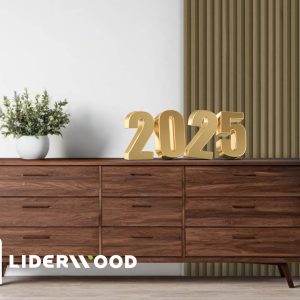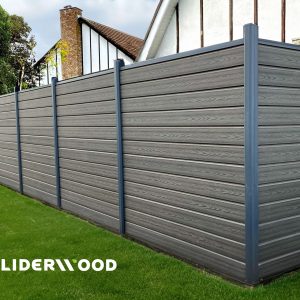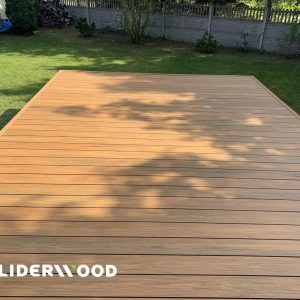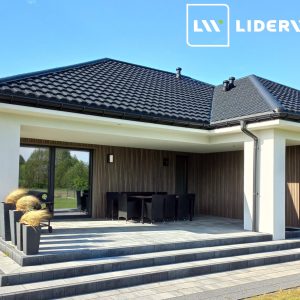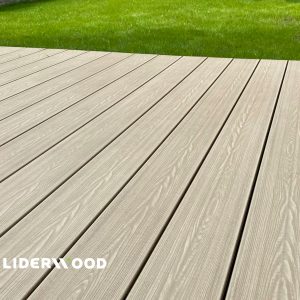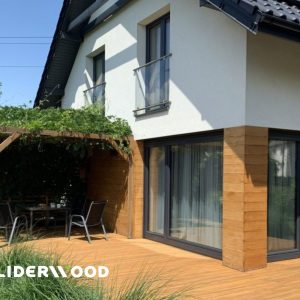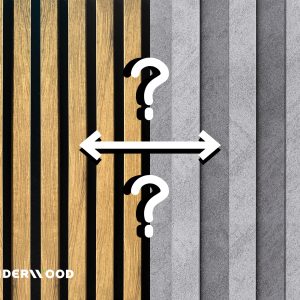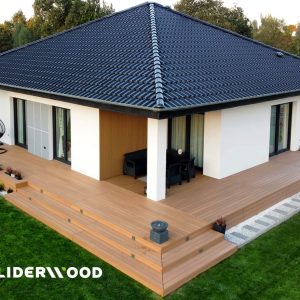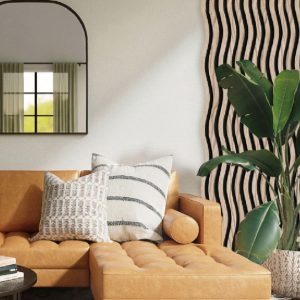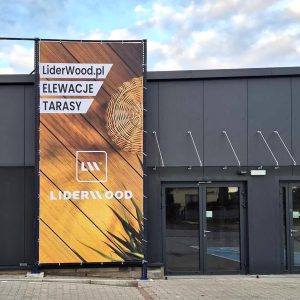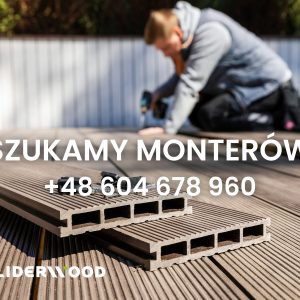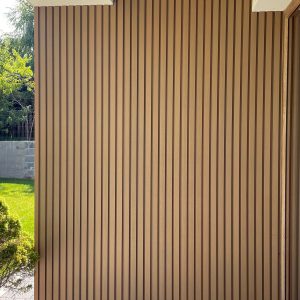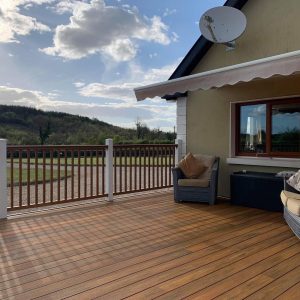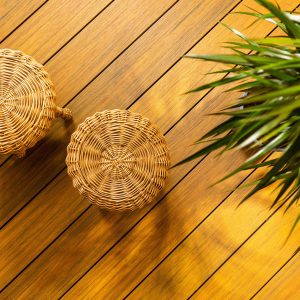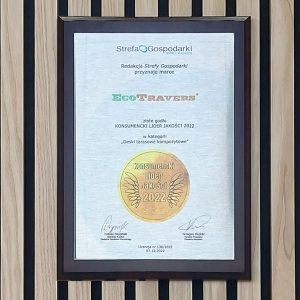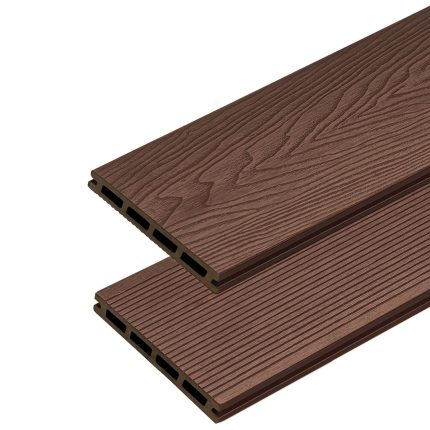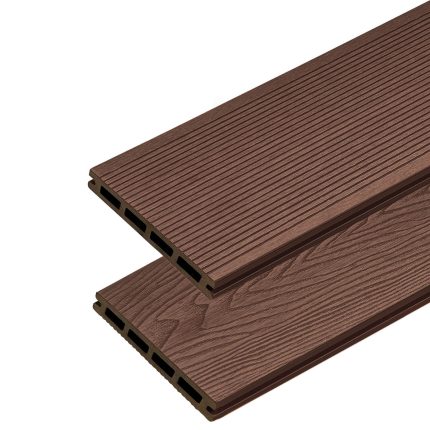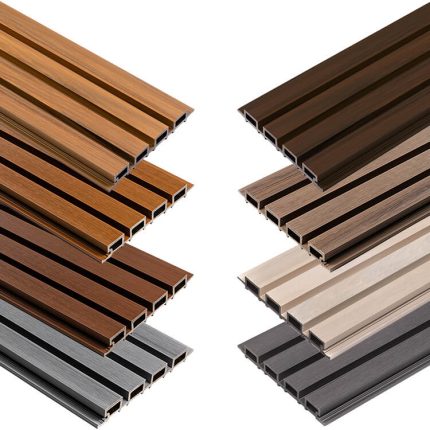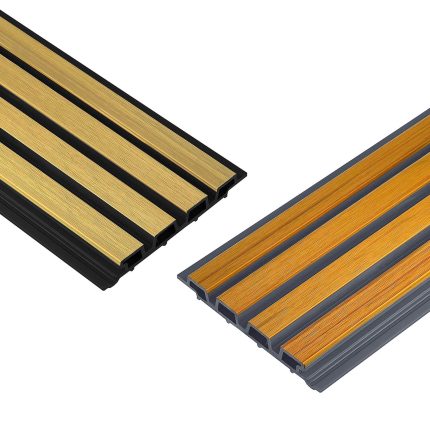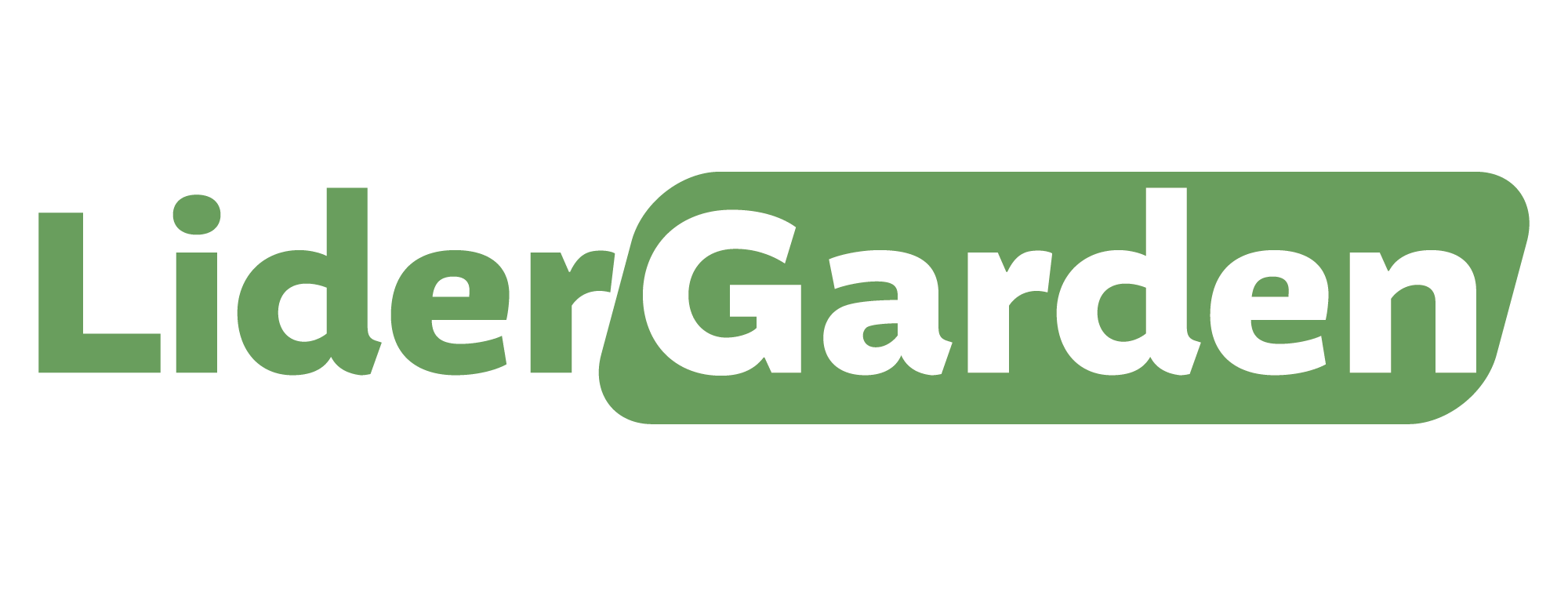Which Decking Board to Choose?
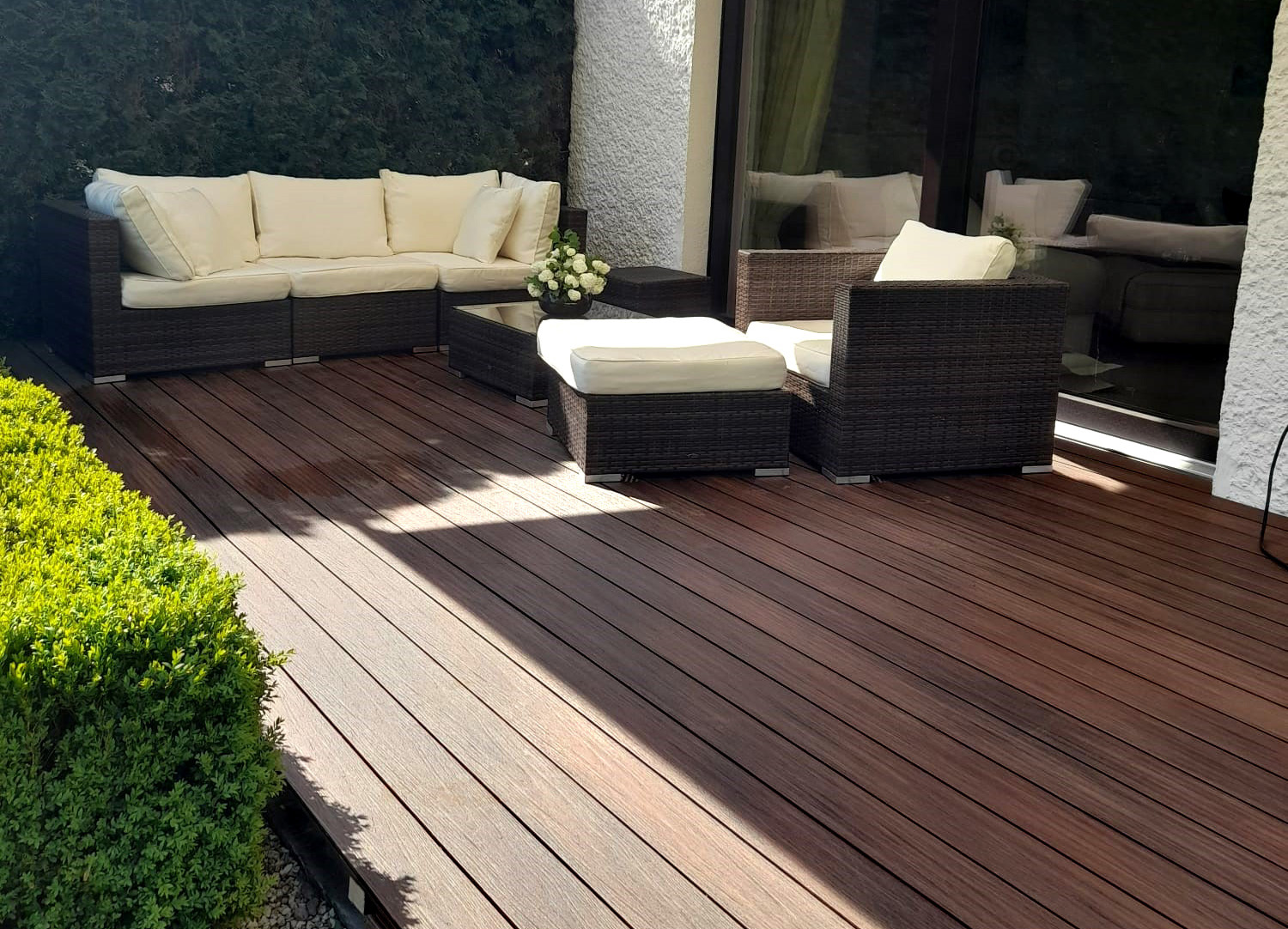
With so many decking boards on the market, choosing the right ones can be not only difficult but also overwhelming. From selecting the material to choosing the color and dimensions, it’s really a series of decisions. In this post, we’ll outline what exactly to consider and what to watch out for.
Composite decking boards can be made from various materials and come in different lengths, widths, and thicknesses. They also differ in core construction, which, along with thickness, affects the durability of the composite board. Composite boards can be produced through extrusion or co-extrusion methods.
Composite or Wooden Decking Boards?
Composite boards are more resistant to adverse weather conditions, such as frost or UV radiation, as well as to insects, rot, and decay caused by fungi or bacteria. Their resistance to both mechanical and environmental factors is largely due to their composition:
- 60% wood flour,
- 35% high-density polyethylene (HDPE),
- 5% UV stabilizers, colorants, and other additives.
Moreover, composite boards do not require impregnation. Maintaining them is straightforward and not time-consuming. We’ve written here about how to care for composite boards.
Dimensions of Composite Decking Boards
When searching for decking boards, durability and strength—along with an aesthetic appearance—are often top priorities. Length, width, and thickness all impact the board’s durability. The thicker and wider the board, the greater the spacing you can allow between joists, meaning fewer joists, supports, clips, and other accessories are needed.
The decking boards available at Liderwood range from 2.4 to 4 meters in length. This range allows you to choose the right board for your needs, reducing the need for cutting and minimizing waste, which also saves on costs. You can opt for boards of the same length for a clean, uniform look or mix different dimensions to create an interesting staggered effect.
Standard Decking Boards stand out for their thickness, which is as much as 25 mm. They are available in two widths: 14 and 15 cm. Their durability is further enhanced by a stable construction designed for resilience. For this reason, it’s worth paying attention to the construction of the decking board.
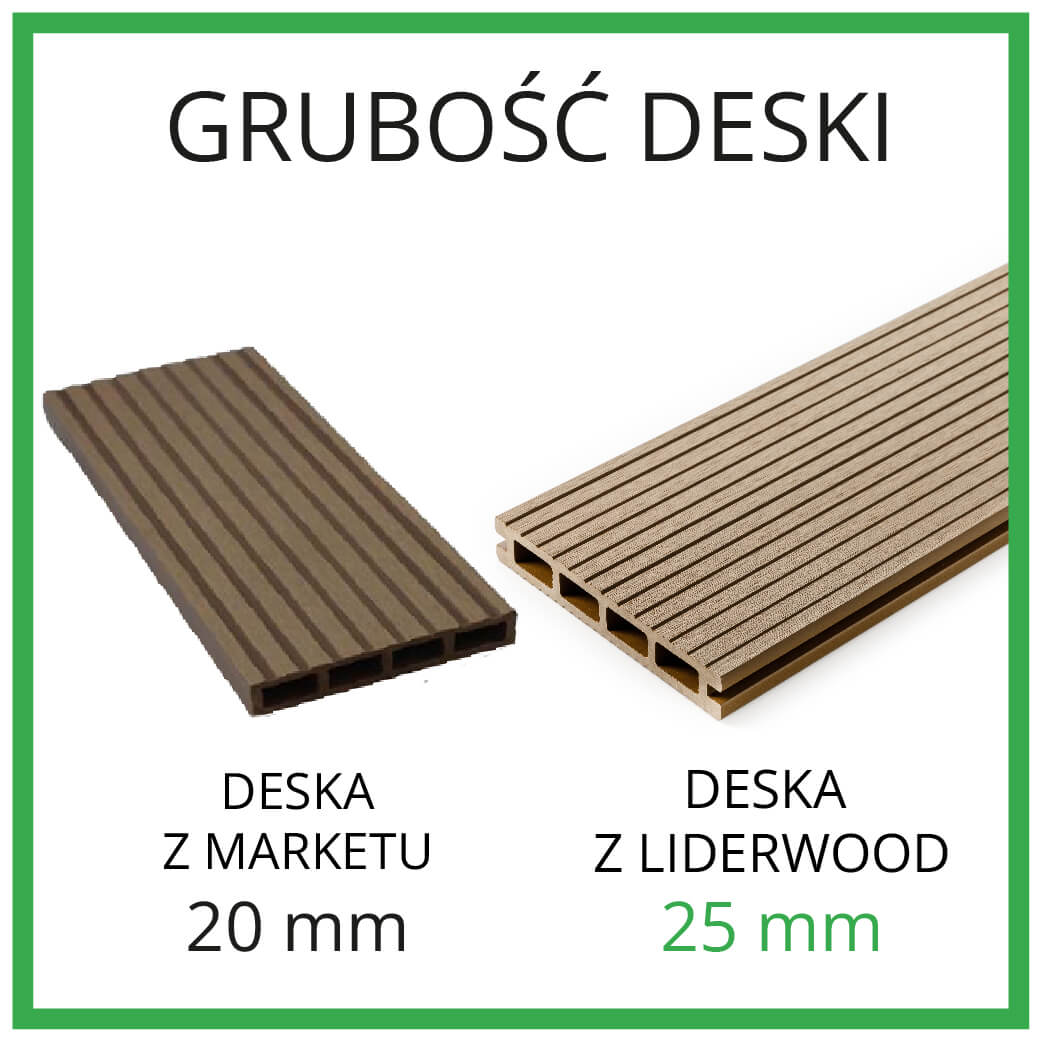
Construction and Structure of Decking Boards
Premium and 3D composite decking boards feature circular chambers. This design allows the composite of wood flour and high-density polyethylene to cover a larger surface area, making the boards more durable. Although the construction of these boards differs from that of Standard decking boards, it is equally robust.
Compared to other similar boards on the market, Standard boards are stronger not only due to their thickness but also because of their reinforced chamber structure.
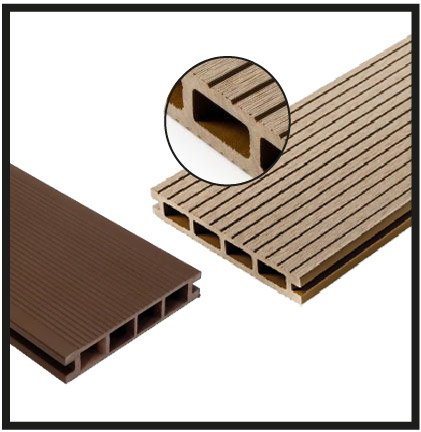
An Important Criterion When Choosing Decking Boards Is Their Texture
Smooth decking boards are available on the market, but unlike grooved or wood-grain patterned boards, they do not provide slip resistance. All decking boards in our range are double-sided. The Standard boards have both fine and wide grooves, while the 3D boards feature a wood-grain pattern and grooves. The Premium boards, on the other hand, are dual-colored and feature only a wood-grain pattern.
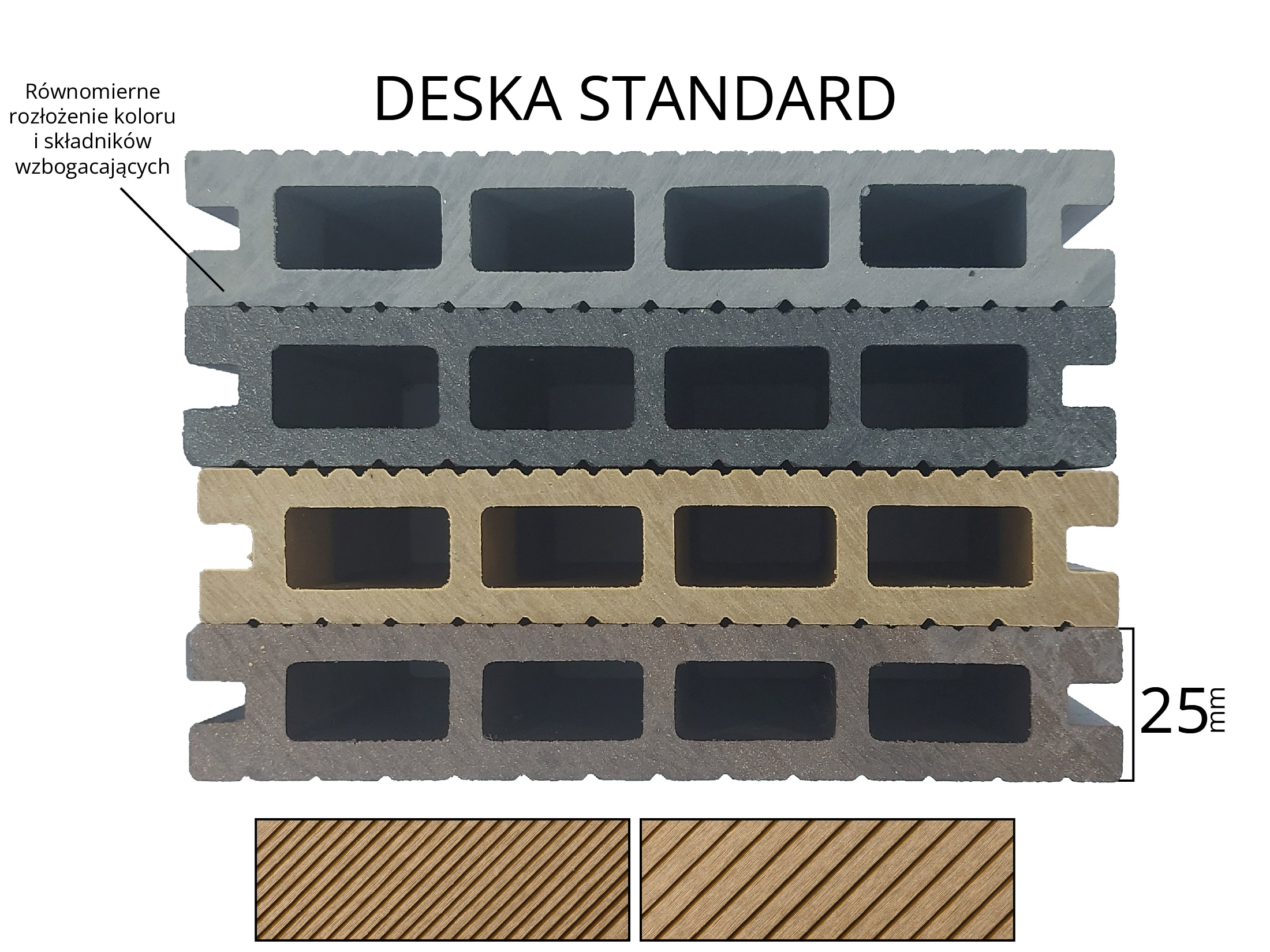
Cross-Section of Standard Decking Board: Light Gray, Anthracite, Honey Teak, Brown
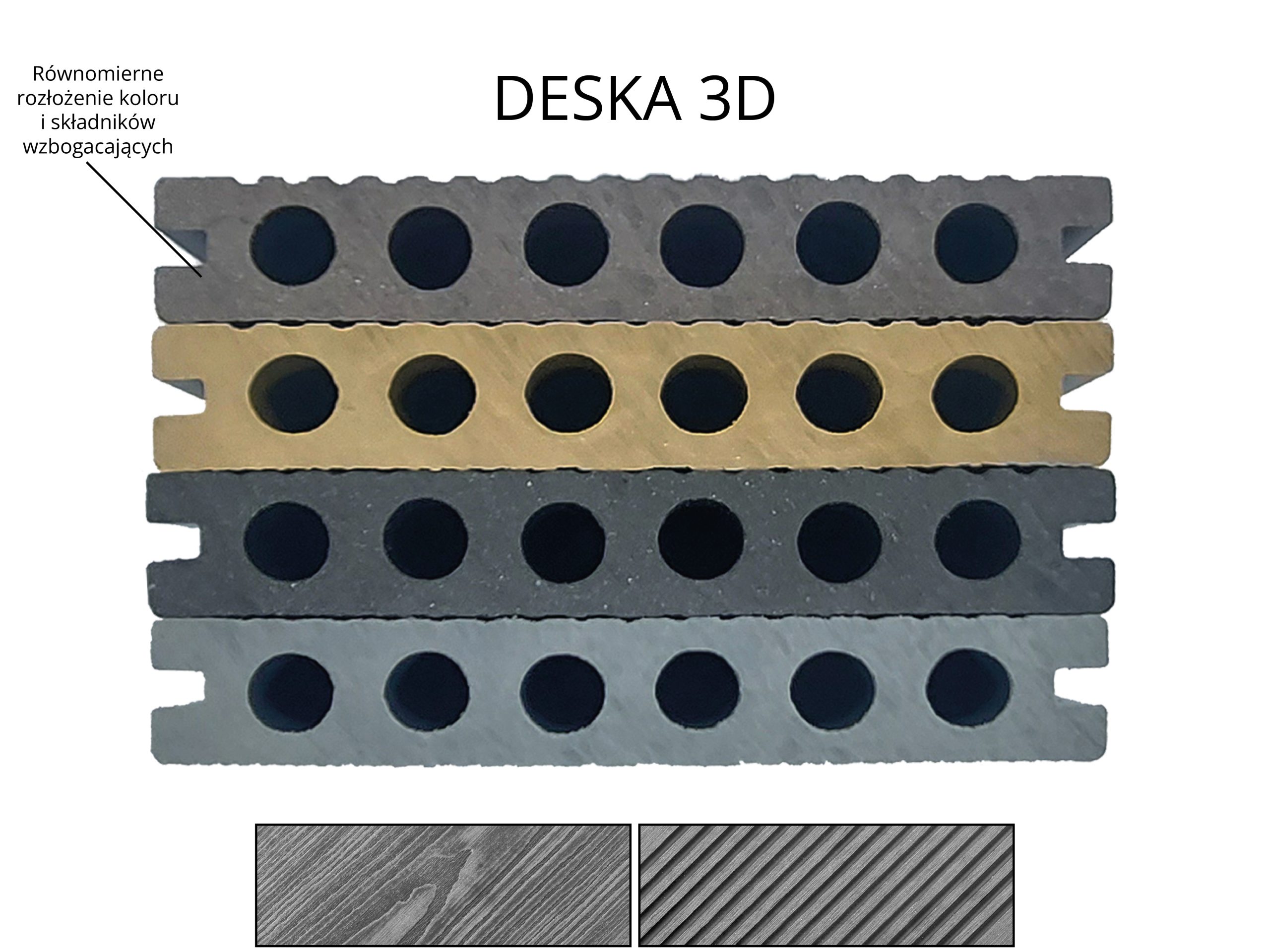
Cross-Section of 3D Decking Board: Brown, Honey Teak, Anthracite, Gray
Extrusion vs. Co-Extrusion
The differences between extrusion and co-extrusion lie in their production processes. Extrusion, also known as single-layer extrusion, produces a composite decking board as a uniform, single-layer piece. Co-extrusion (also called dual-layer extrusion) creates two layers with distinct compositions. Each method has its advantages. Extrusion results in a consistent color across the board’s surface and an even distribution of ingredients, including enhancement additives. This is the method used for producing both 3D and Standard decking boards.
The Premium composite board is made using the co-extrusion method. With this method, enhancement additives such as UV protectants, stabilizers, and pigments are concentrated in the outer layer, where they are most effective. The inner layer of this board consists of a blend of wood flour and HDPE (high-density polyethylene). The outer layer of Premium decking boards is a polymer coating that fully encases the board, protecting it from color fading and stains.
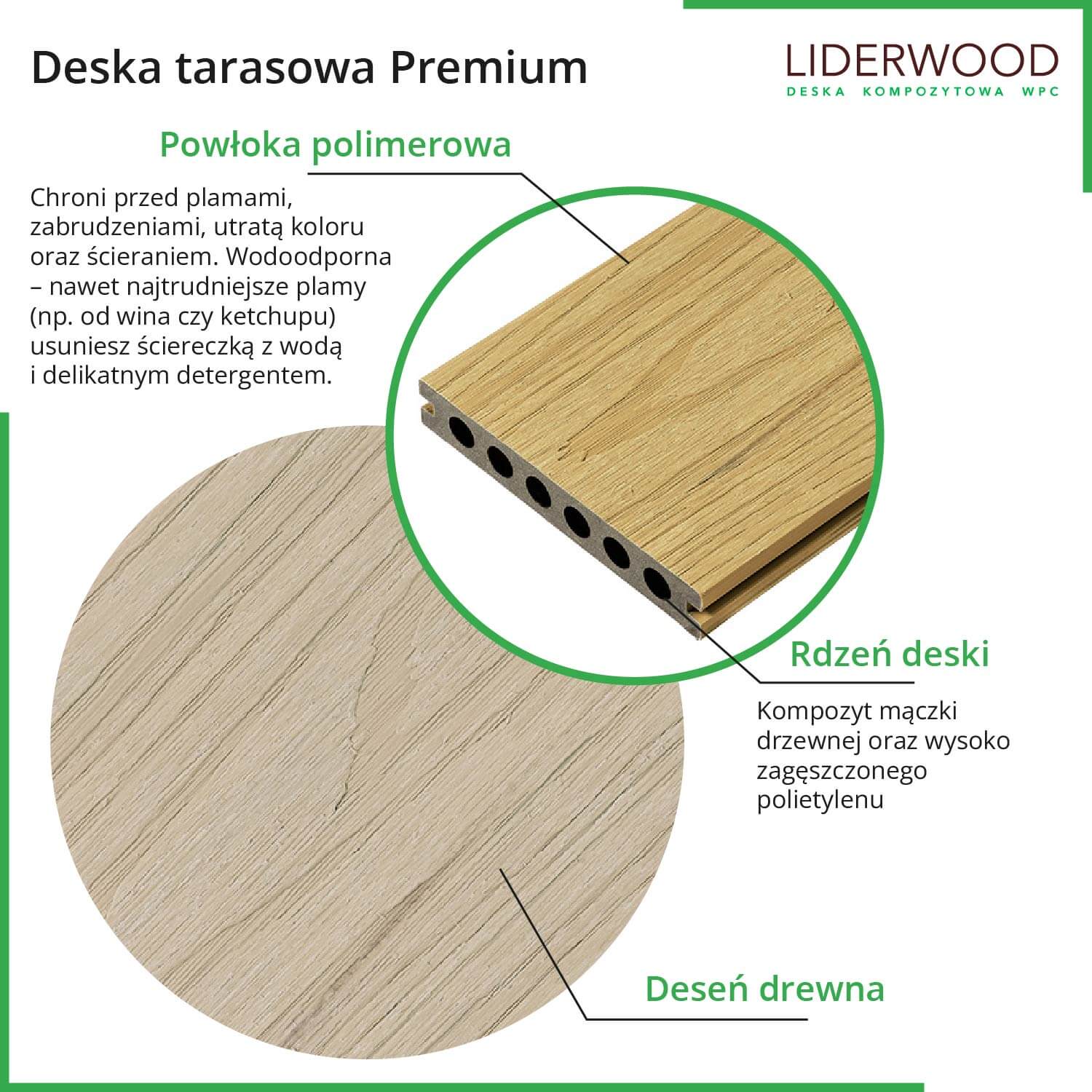
The choice of decking board depends on many factors, including the location where it will be installed. If you’re unsure which decking board to choose, please contact our sales department:
Rumia Showroom: +48 514 120 355


